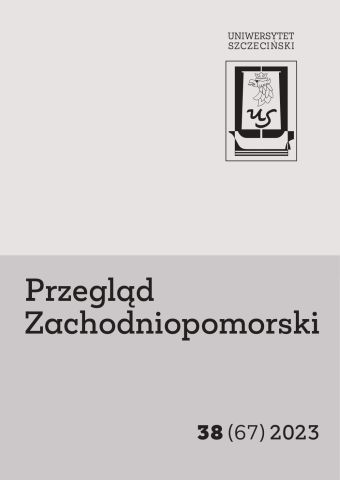Niematerialne dziedzictwo kulturowe wsi Pomorza Zachodniego – przemiany i stan współczesny
Intangible cultural heritage of Western Pomerania villages – transformations and contemporary state
Author(s): Anna KwaśniewskaSubject(s): History, Local History / Microhistory, Recent History (1900 till today), Post-War period (1950 - 1989), Transformation Period (1990 - 2010), Present Times (2010 - today)
Published by: Wydawnictwo Naukowe Uniwersytetu Szczecińskiego
Keywords: intangible cultural heritage; Western Pomerania; heritage creation; invented tradition
Summary/Abstract: World War II and the subsequent population changes have altered the cultural landscape of Western Pomerania. Settlers from various regions of Poland, as well as people from Kresy, Ukrainians, and Lemkos, brought with them not only material heritage but also intangible cultural heritage. The clash of cultures and the process of modernization in the 1960s and 70s resulted in the disappearance of many of its manifestations. To this day, some customs and practices have survived, but there is also a noticeable process of heritage creation, reconstruction, and invention. Ethnographic field research conducted by the author from 2015 to 2019 in seven counties in the West Pomeranian and Pomeranian voivodeships showed that the intangible cultural heritage of Western Pomerania is mosaic-like and depends largely on the regional origins of the residents and the activities of cultural institutions and associations. In the eastern part of the region, many aspects of heritage brought by the Kashubians continue to be observed. Throughout the region, some customs related to religious holidays (Catholic, Greek Catholic, Orthodox) are still practiced, along with customs related to religion, as well as remnants of beliefs and magical practices. In the central and western parts of the region, there is a grassroots effort to construct new (post)folk culture, particularly in music. Many vocal and vocal-instrumental groups, especially composed of older generations, have formed and function. The heritage of the Kresy, Ukrainian, and Lemko cultures is “discovered.” In the process of (re)constructing heritage and identity, intangible heritage of former residents – Jamne, Slovincian – is explored, and collections of legends are published, along with the creation of new stories about the region. There is a changing approach to memorial sites, such as post-German cemeteries, and an increasing appreciation for the fairly numerous remaining examples of traditional folk architecture.
Journal: Przegląd Zachodniopomorski
- Issue Year: 38/2023
- Issue No: 01
- Page Range: 416-447
- Page Count: 32
- Language: Polish

